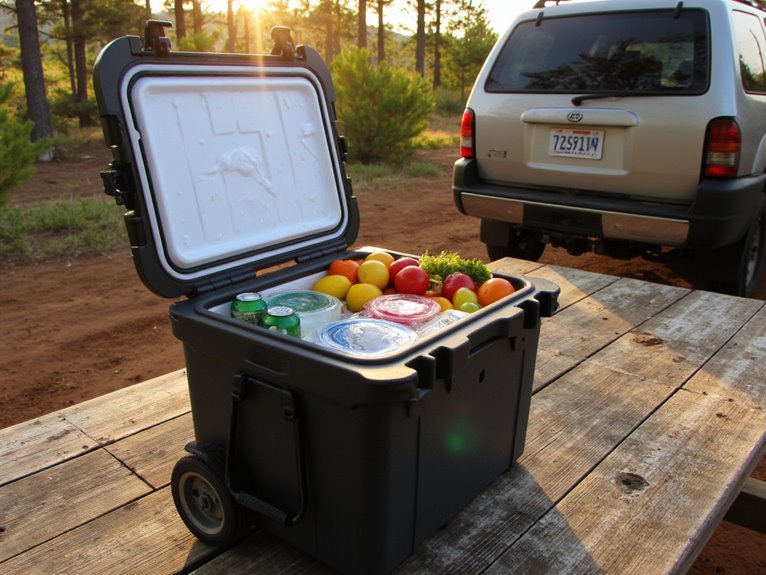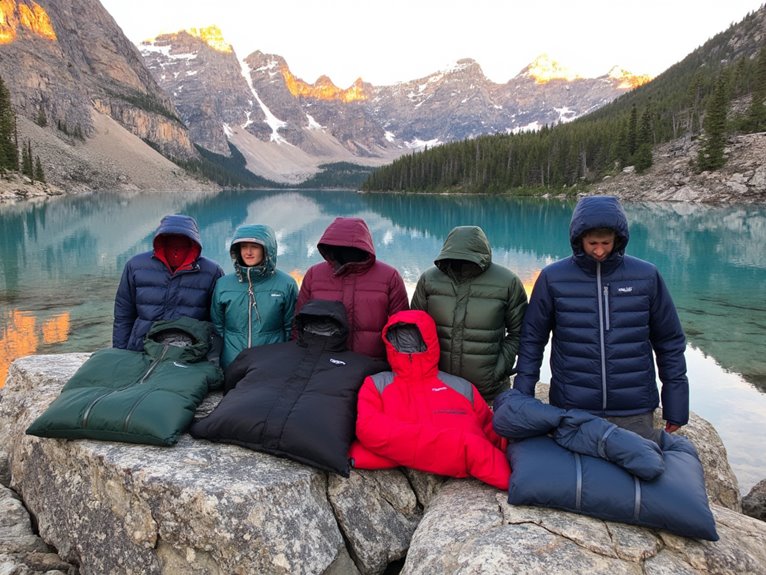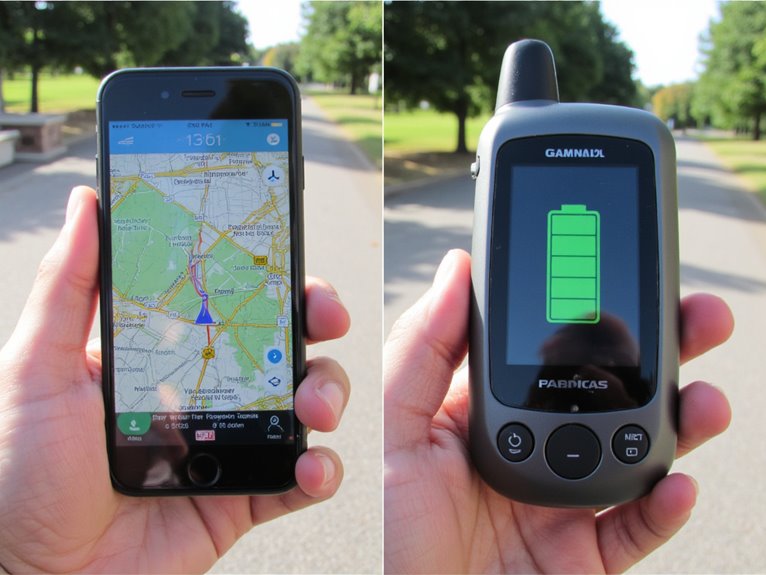How to Survive Wind Chill?
Surviving wind chill requires a multi-faceted approach. First, understand the wind chill index to evaluate risks associated with cold weather exposure. Dress appropriately with moisture-wicking base layers, insulating mid-layers, and waterproof outer layers. Protect exposed skin with insulated gloves, hats, and waterproof pants. Find shelter from wind, stay active, and move frequently to maintain body heat. Recognize hypothermia symptoms, such as shivering, confusion, and disorientation, to take prompt action. By mastering these survival strategies, you'll be better equipped to thrive in extreme cold. To further minimize your risk, consider the specifics of fabric selection, shelter creation, and hypothermia response – essential knowledge for braving the harshest conditions.
We are supported by our audience. When you purchase through links on our site, we may earn an affiliate commission, at no extra cost for you. Learn more. Last update on 6th January 2026 / Images from Amazon Product Advertising API.
Understanding Wind Chill Index
Understanding Wind Chill Index
The wind chill index, a significant meteorological concept, represents the apparent decrease in air temperature felt by the human body due to wind's cooling effect.
This index is calculated by considering the air temperature and wind speed.
The stronger the wind, the greater the cooling effect, making the air feel colder than the actual temperature.
For instance, if the air temperature is -10°C and the wind speed is 40 km/h, the wind chill index would be around -18°C, indicating that the air feels 8°C colder than the actual temperature.
Accurately understanding wind chill is essential for evaluating the risks associated with cold weather exposure, allowing individuals to take necessary precautions to avoid hypothermia and frostbite.
Dressing for Extreme Cold
When venturing into extreme cold, dressing appropriately is vital for survival.
A well-planned wardrobe can mean the difference between comfort and catastrophe.
Layering for Success
Three key layers form the foundation of a successful dressing strategy for extreme cold.
A moisture-wicking base layer should fit snugly to wick away moisture from the skin, preventing chilling.
A insulating mid-layer, typically made of fleece or down, provides insulation and traps warm air.
A waterproof outer layer shields against wind and precipitation.
This layering system allows for adaptability and flexibility, as each layer can be added or removed to adjust to changing temperatures.
Cold Weather Essentials
Proper cold-weather attire is essential for survival in extreme cold, and includes essential items that provide additional warmth, protection, and functionality.
When venturing out into freezing temperatures, it's crucial to prioritize the right clothing to stay safe and comfortable.
- Insulated, waterproof parka: A good parka will provide both warmth and protection from wind and precipitation.
- Thermal base layers: Moisture-wicking thermal tops and leggings will help regulate body temperature and prevent chilling.
- Insulated, waterproof pants: Waterproof pants will keep your lower body dry and protected from the elements.
Accessories Matter
In addition to a solid foundation of cold-weather clothing, accessories play a vital role in protecting extremities and maintaining overall body heat in extremely cold conditions.
A good hat or beanie can prevent up to 40% of body heat loss, while gloves or mittens can keep hands warm and toasty.
Scarves or neck gaiters can protect the neck and face from harsh winds.
Additionally, goggles or sunglasses can shield the eyes from snow glare and wind.
Insulated, waterproof boots with good grip can prevent slips and falls on icy surfaces.
Choosing the Right Fabric
When it comes to choosing the right fabric for surviving wind chill, two key factors come into play: thermal insulation properties and moisture-wicking ability.
The former is crucial for retaining body heat, while the latter helps prevent chilling effects of cold moisture.
Thermal Insulation Properties
Three key factors – warmth, breathability, and moisture management – determine the thermal insulation properties of a fabric, making the right choice essential for surviving wind chill.
When selecting a fabric, consider the following:
Fabric thickness: A thicker fabric provides better warmth but may compromise breathability.
Fiber type: Natural fibers like wool and down provide excellent warmth, while synthetic fibers like polyester and nylon offer better breathability.
Weave and knit: A tight weave or knit helps retain warmth, while a looser construction allows for better airflow.
Moisture-Wicking Ability
Fabric selection for wind chill survival hinges on a fabric's ability to wick moisture away from the skin, as excessive moisture can lead to rapid heat loss and discomfort.
Moisture-wicking fabrics are essential to prevent cold-related illnesses. Look for fabrics with high moisture-wicking abilities, such as merino wool, synthetic fabrics like polyester or nylon, or blends of these materials.
These fabrics will draw sweat away from your skin, allowing it to evaporate quickly and maintaining a dry, warm layer next to your skin. Avoid cotton as it retains moisture, making you colder.
Choose clothing with a moisture-wicking treatment or coating to boost this ability. By selecting the right fabric, you'll stay dry, warm, and comfortable in cold, windy conditions.
Layering for Maximum Warmth
By strategically layering clothing, you can trap warm air close to your body, effectively retaining heat and protecting yourself from the biting cold. This technique allows you to maintain a comfortable body temperature, even in extremely cold conditions.
- Base layer: A moisture-wicking base layer to draw sweat away from your skin.
- Insulating layer: A breathable, insulating layer (such as fleece or down) to trap warm air.
- Outer layer: A waterproof and windproof outer layer to shield you from the elements.
Protecting Exposed Skin
While layering provides excellent protection for your body, it's just as essential to safeguard your exposed skin, including your face, hands, and feet, which are vulnerable to wind chill and frostbite.
To protect your face, apply a thin layer of moisturizer or lip balm with SPF to shield against harsh winds.
For your hands, wear insulated gloves or mittens made of waterproof and breathable materials. Consider using hand warmers for added warmth.
Don't forget to cover your feet with warm, moisture-wicking socks and insulated, waterproof boots.
Finally, wear a hat or headband to prevent heat loss from your head.
Staying Dry in Wet Conditions
When venturing outdoors in wet conditions, it's essential to prioritize staying dry, as moisture can accelerate heat loss and increase the risk of hypothermia.
Wet clothing can make you lose heat up to 20 times faster than dry clothing, making it vital to take preventive measures.
To stay dry, follow these tips:
- Wear water-repellent and breathable clothing, such as those with Gore-Tex or similar technology.
- Apply waterproofing treatments to your gear and clothing to boost their water-repelling properties.
- Bring spare, dry clothes in case your primary layers get wet, and change into them as soon as possible.
Finding Shelter From the Wind
In addition to staying dry, finding adequate shelter from wind is vital to maintaining body heat and preventing wind chill.
Look for natural shelters like caves, rock overhangs, or thick forests, which can block wind and reduce heat loss.
If natural shelters are not available, create your own using a windbreak, such as a snow wall or a tarp, to block the wind.
A good shelter should also protect you from precipitation and have a dry floor to prevent heat loss.
If you're outside, try to position yourself with the wind at your back to minimize heat loss.
Staying Active and Moving
How can you maintain body heat and stave off wind chill when the mercury drops and the winds howl?
One effective way is to stay active and keep moving. This helps to generate body heat and maintain blood flow to your extremities.
Jog or march in place to keep your blood flowing and muscles warm.
Do some light exercises like arm circles, leg lifts, or torso twists to keep your body warm.
Change your position frequently to avoid standing or sitting in one spot for too long, which can lead to heat loss.
Recognizing Hypothermia Symptoms
Hypothermia can occur quickly and silently, making it essential to recognize the warning signs and symptoms, which can be subtle and easily overlooked.
Early detection is critical, as hypothermia can progress rapidly, leading to confusion, disorientation, and even death.
Common symptoms include shivering, numbness, and pale or blue-tinged skin.
As hypothermia progresses, victims may experience confusion, drowsiness, and loss of coordination.
If you suspect someone has hypothermia, move them to a warm location, remove wet clothing, and provide warm, non-alcoholic beverages.
Call emergency services if the person's condition worsens or if they experience severe symptoms.




